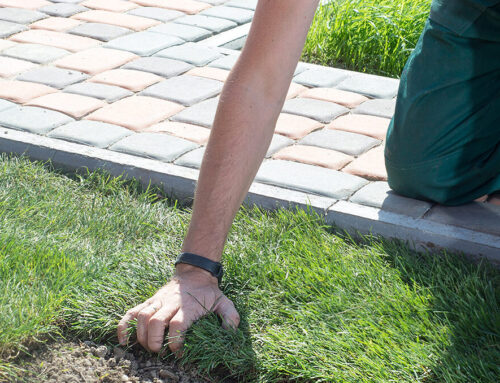Snow Removal Tips
Treat the Surface With a De-Icer
Regular maintenance done to preventatively prepare the driveway surface for snowfall can go a long way in helping keep the accumulation at bay. Many de-icing products are intended to cure ice buildup and simultaneously make it easier to get through the winter without needing to shovel your driveway. This method works most reliably in geographies that only receive a few inches of snow at a time, rather than in locations where 8” or more a day is the norm.
One downside of de-icer is it can affect the grass or plants in your landscape. If you choose to go this route, spread de-icer away from plants and grass to help prevent future issues.
Snow Shoveling Tips
Snow shoveling isn’t fun, but it’s often unavoidable. In areas where snow is no stranger, it’s ill-advised to allow even the most minor snowfall to go un-shoveled in your driveway or pathways.
Use the appropriate snow shovel. For heavier snow, you will need a shovel with a scoop. For lighter snowfall, you can use a wide plow-style shovel. The plow style will speed up your snow removal process drastically when used on light snow.
As for any yard maintenance job, priority #1 in snow shoveling is safety, followed by comfort and efficiency. Consider doing the following before you even step outside:
- Stretch your muscles to prevent injury.
- Dress in layers to stay warm.
- Vow to take breaks: Continuous or heavy snow shoveling can strain your cardiovascular system.
- “Wax” your shovel blade, making it slick and preventing snow from sticking to it. Although candle wax, floor wax, or car wax may be used, cooking spray works fine, too.
Use a Snowblower
Running a snowblower seems like a skill you could master in two minutes, but there are a reported average of 6000 snowblower accidents a year. A snowblower can be a very useful piece of machinery if operated correctly. Here are a few tips to help take full advantage of your snowblower.
- Don’t wait for it to stop snowing. Start to clear snow after every 6” of snowfall
- Throw Snow As Far As You Can. Avoid throwing snow only partway off the driveway and then throwing it a second time.
- Take Smaller Bites to Avoid Clogs. It’s tempting to crank up the speed and plow right through it. Unfortunately, that can damage multiple components of your blower.
- Don’t Forget Pre-Season Maintenance. Get your snow blower ready for action by installing a new spark plug, changing the oil, and checking the condition of the belts. Replace the belts if you see cracks, fraying, or glazing or notice that chunks are missing.








